The Florida Reef Tract – A Guide for Divers
Did you know Florida is home to the third longest barrier reef in the world? Who knew, right? It’s called the Florida Reef Tract and it’s pretty awesome. This is everything a scuba diver needs to know about visiting the Florida Reef Tract.
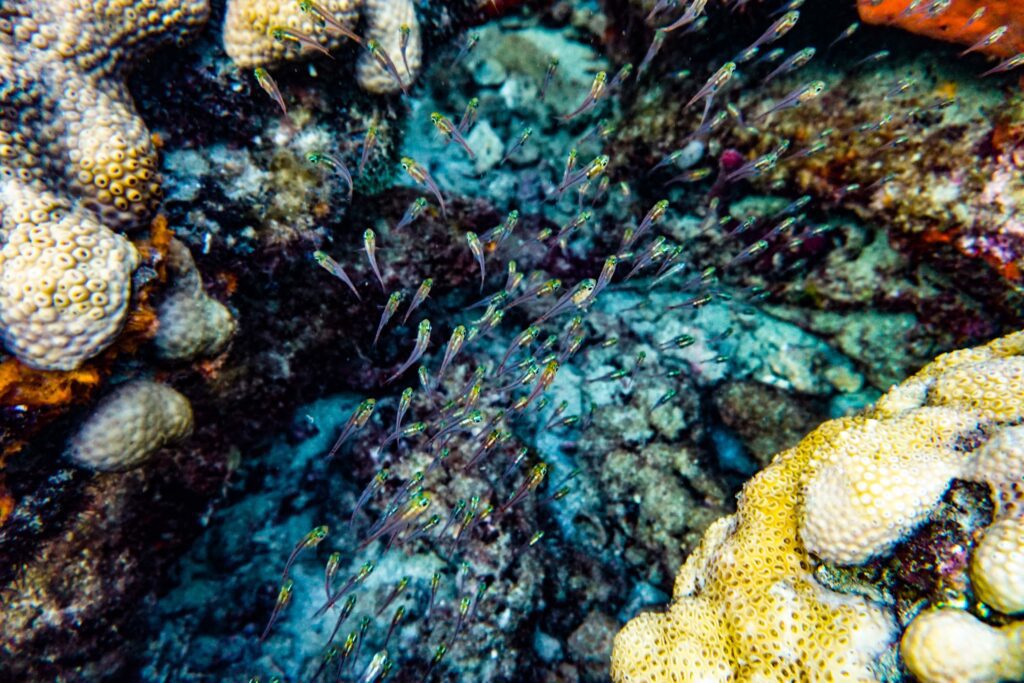
This article lays out the information for a basic understanding of the coral reef found in Florida. At the conclusion, you’ll learn:
- Where the coral reefs are located in Florida.
- What the Florida Reef Tract is.
- The type of coral reef formations found on the Florida Reef Tract.
- Basic species of coral found in Florida.
- The marine life found surrounding the coral reef.
- How to enjoy the coral reef in Florida.
Does Florida have coral reef?
Growing up in Michigan all I knew was the Great Lakes. A sandy lakefront and freshwater paradise. Coral reef? Never seen it.
Little did I know, 1,300 miles south, as the crow flies, was an underwater tropical paradise. Turquoise water, sugar white sand, and a vibrant ecosystem just steps off the shore.
Does Florida have coral reef? Yes! It sure does!
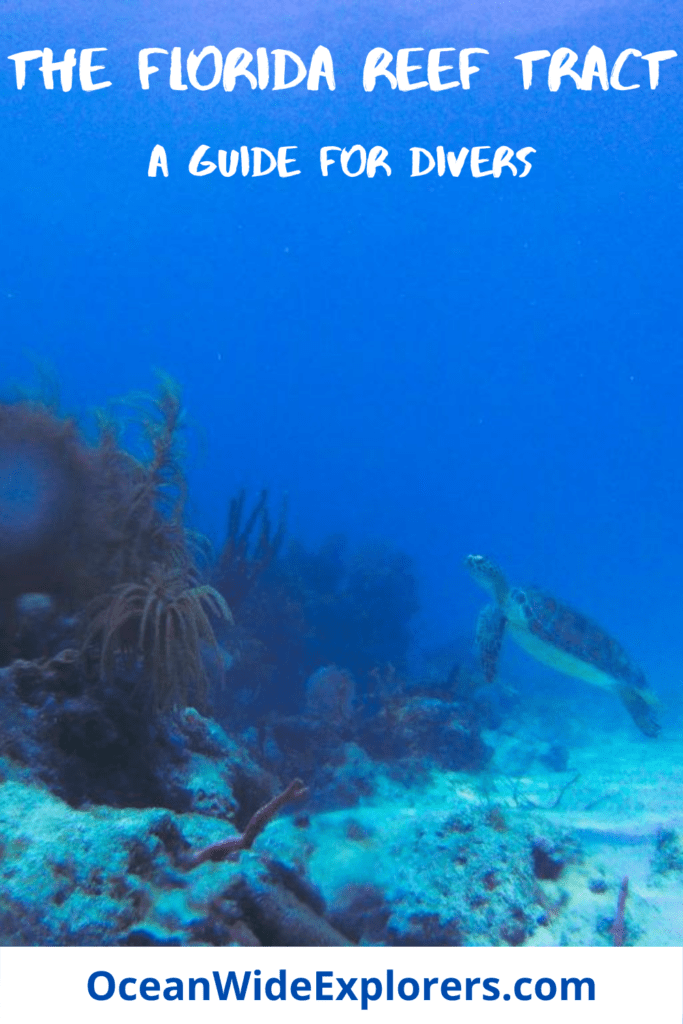
What is the difference between a coral and a reef? Is there a difference?
When most people think of “coral reef” they think of one entity; one giant structure of life. However, that’s not true. A coral is actually very different from a reef.
Simply, a coral is an animal. A reef is a physical structure.
The best example of a natural reef structure is the limestone on the bed of the ocean that coral often grows on. But other examples may include a pile of rubble or concrete (ROCK REEFS), large metal structures such as shipwrecks (ARTIFICIAL REEFS), and even ALGAE REEFS! All would technically be classified as a reef.
When combined into one word (CORAL REEF) the implication is it is a physical structure with coral growing on it!
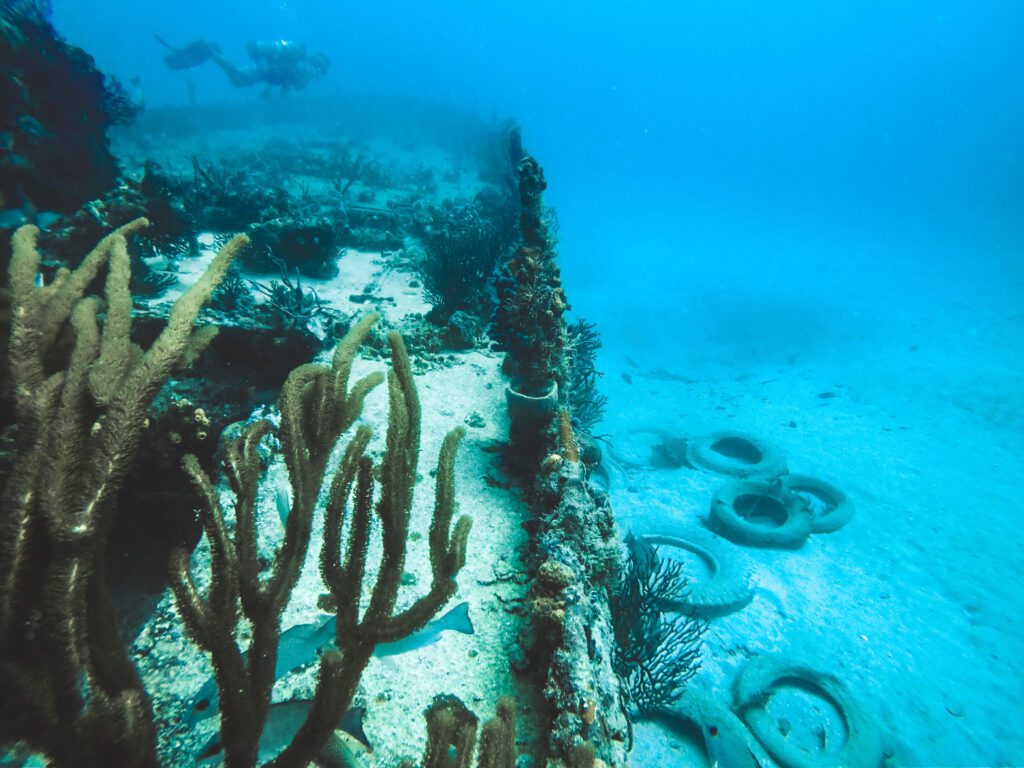
Where are coral reefs in Florida?
The majority of coral reefs in Florida are along a 360 linear mile tract, called the Florida Reef Tract. This barrier reef stretches all the way from the Dry Tortugas (70 miles west of Key West) up to the St Lucie Inlet in Martin County on Florida’s east coast.
Everything in between? The Florida Keys, Miami-Dade county (Key Biscayne, Miami), Broward County (Hollywood, Fort Lauderdale, Pompano Beach, Deerfield Beach), and Palm Beach County (Boca Raton, Delray Beach, Boynton Beach, West Palm Beach, and Jupiter).
In most of these places, you can find the coral reef after a quick boat ride, and in some cases, after a short swim from shore!
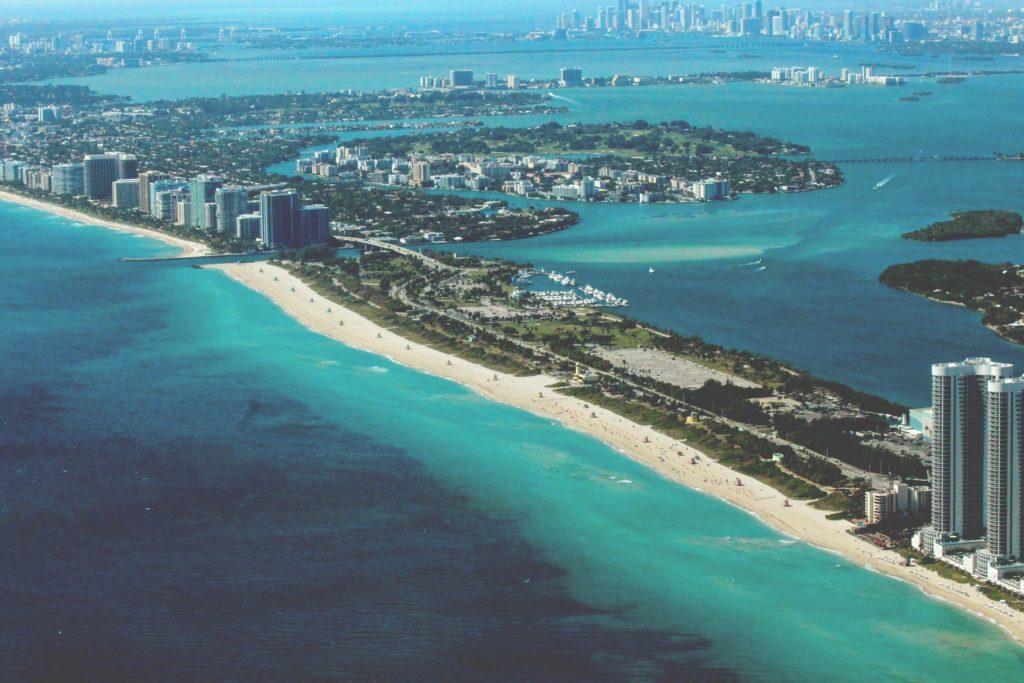
What is the Florida Reef Tract?
Running from Dry Tortugas to the St Lucie Inlet, the Florida Reef Tract is the third longest barrier reef system in the world; and the only natural coral reef found in the continental United States!
(And in case you were wondering, the Great Barrier Reef in Australia and the MesoAmerican Reef in Honduras, Belize, and Mexico are the first and second longest, respectively.)
That doesn’t mean it lacks any of the life those other reefs boast. In fact, an estimated 1,400 marine species call the Florida Reef Tract home!
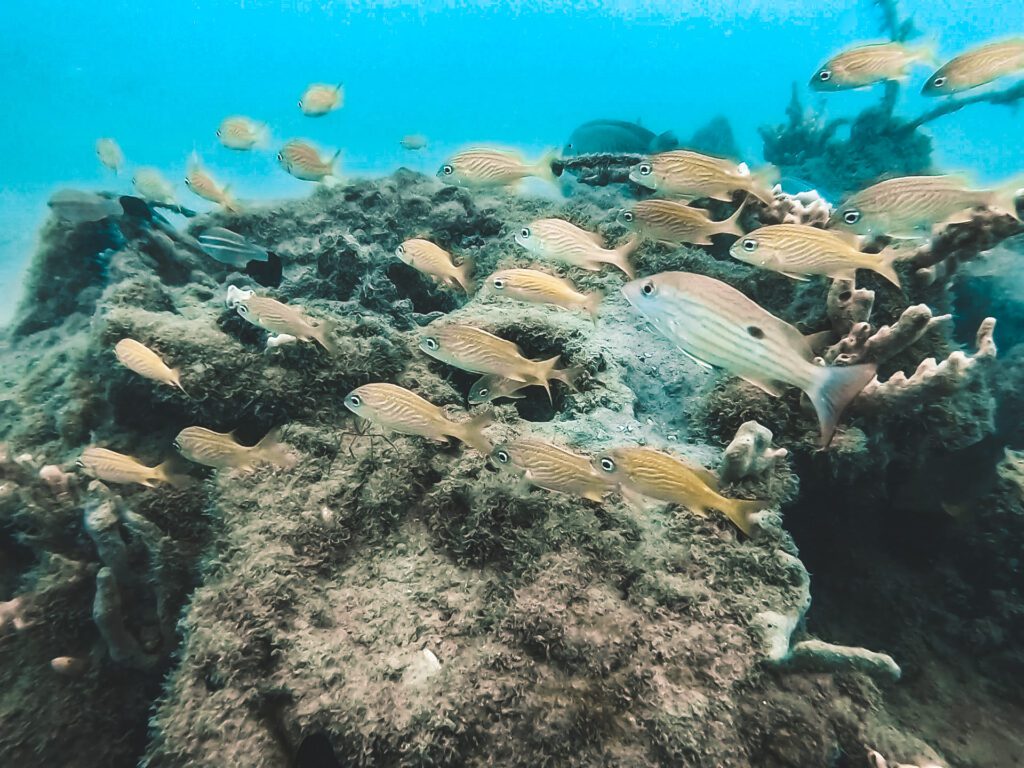
What type of coral reef formations are found in The Florida Reef Tract?
Reefs around the world are often broken into five categories: barrier, fringing, bank, atoll, and patch reefs.
For simplicity sake, the Florida Reef Tract is almost entirely a barrier reef with patches close to shore!
However, when I take student divers out in the Florida Keys, I tell them they’ll be diving four different types of coral reef formations: artificial reef, spur and groove formation, ledge reefs, and patch reefs. All of which are within the barrier reef. Simple, right?
- Artificial Reefs: most often shipwrecks, bridge rubble, or limestone debris. Many artificial reefs are intentionally planted to stimulate coral growth, providing an attachment site for the complex animal.
- Spur and Groove Formation: a common feature in barrier reefs, spur and groove formations are formed from centuries of wave action carving out channels underwater. These reefs are typically found at depths of 45 – 60 feet. A good example is Hammerhead Reef in Fort Lauderdale.
- Ledge Reefs: many reefs along the Florida Reef Tract are referred to as ledge reefs. These typically are found in 25 feet of water and look exactly as the name would imply: a small ledge. You never know what sort of marine life you’ll find hiding under the ledge.
- Patch Reefs: a reef structure in the middle of a plot of sand or sea grass; typically about the size of a small house. Often sitting in shallower waters (below 20 feet) between the main barrier reef and the shore.
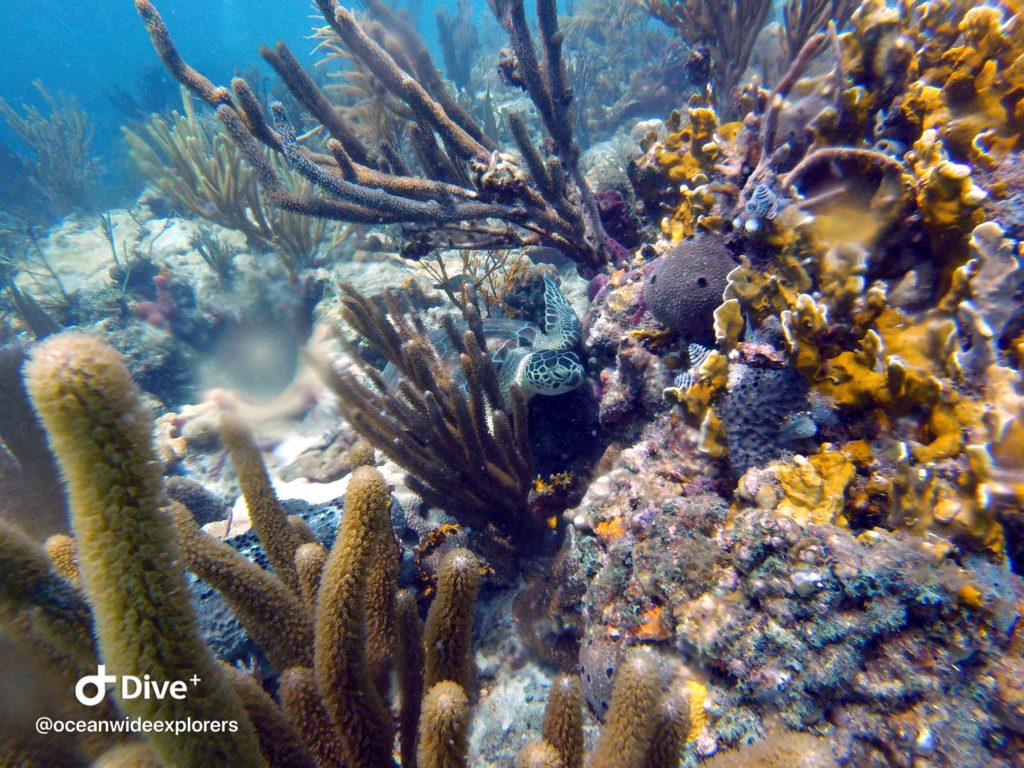
What species of coral can you find in The Florida Reef Tract?
Typically divided into two categories, hard and soft corals can be found along the Florida Reef Tract. Luckily for us, marine scientists never did get too creative when they named the individual species. In other words, they’re easy to remember!
Hard Corals:
Nearly 50 species of hard coral call Florida’s water home. Each species named for precisely what it looks like (scientists were so creative).
Brain Coral:
Staghorn Coral:
Elkhorn Coral:
Star Coral:
Soft Corals
You can dive down to find 35 different species of soft coral in the Florida Reef Tract. Soft corals grow quicker than hard coral, so you often notice these more often than their counterpart.
Sea Fan:
Sea Whips:
Sea Plumes:
What marine life can you find on Florida’s Reef Tract?
The Florida Reef Tract is home to most Atlantic and Caribbean Reef fish. Some of the most common families of fish found are grunts, snappers, parrotfish, wrasses, and butterfly fish.
Larger marine life call the Florida Reef Tract home too, or at the very least, stop in for a snack from time to time. For more on these animals, check out one of the following articles:
- Common Sharks Seen While Diving in Florida
- Meet the Sea Turtles of Florida
- 11 Coolest Ocean Animals Found in Florida
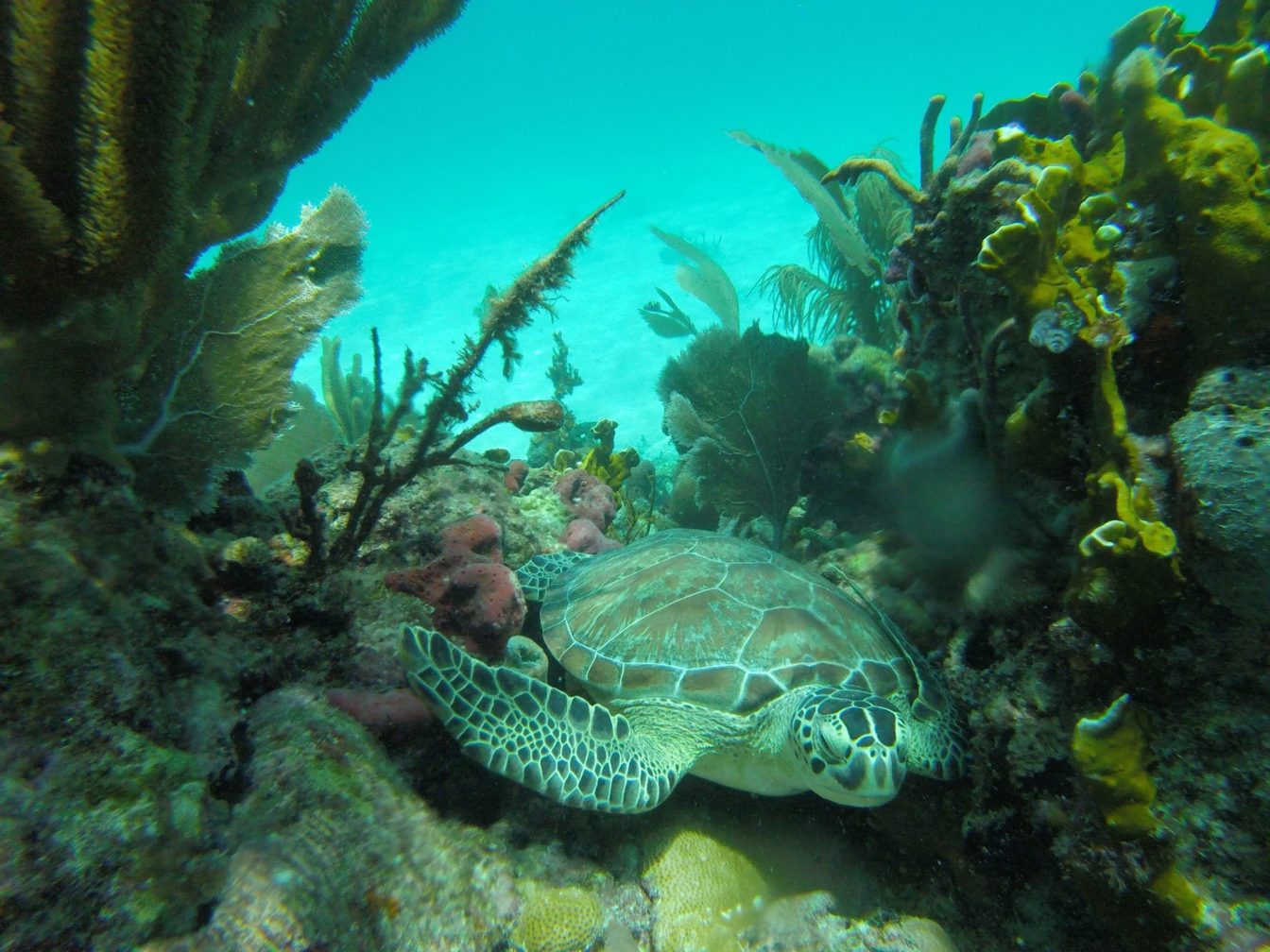
The Florida Reef Tract and its unique feature in South Florida
As the Florida Reef Tract runs along the Miami-metro area (aka South Florida), the reef splits into three tiers.
Each of these tiers runs on a north to south axis and sit in varying degrees of depth:
- The first tier lies in 15 – 20 feet of water and can largely be accessed from the shore in places like Lauderdale-by-the-Sea.
- The second tier is further off shore and can be found 20 – 30 feet down. These sites are typically used as drift drives by local dive shops on the second dive of the day. Examples include The Caves, Oakland Ridges, and Barracuda Reef in Fort Lauderdale.
- The third tier of reef is the deepest and most prominent in 45 – 100 feet of water. Filled with all sorts of marine life, they’re even stocked full of an invasive species called lionfish that are decimating native fish populations. Hammerhead Reef in Fort Lauderdale is our favorite third reef site to hunt for lionfish!
The three tier reef is most prominent in the Fort Lauderdale area, an underrated destination for scuba diving.
How to see the coral reef in Florida
The best way? Scuba diving, of course!
However, if that’s not your thing you have a few other options:
- Snorkeling in Key Largo at one of the many dive shops or charter boats.
- Glass bottom boat tours at John Pennekamp State Park in Key Largo.
- Snorkeling or glass bottom boat tours with Fury in Key West.
- Glass bottom boat tours or snorkeling in Fort Lauderdale with Sea Experience.
- Self guided snorkel tours at Blue Heron Bridge in West Palm Beach or Lauderdale-by-the-Sea.
Get out there and enjoy all the coral reef South Florida has to offer!

Why are Florida’s Coral Reefs dying?
The cat’s out of the bag, and for good reason. Florida’s coral reefs are dying as they face threats they’ve never seen before. A few of these threats include:
- Warming waters causing coral bleaching.
- Loss of habitat.
- Again, warming waters causing an increased acidification in the world’s oceans. Unfortunately, corals cannot survive this elevation in pH.
- Overfishing of environmentally important species of fish.
- Invasive species such as lionfish which devastate native fish populations.
- Plastic pollution in the oceans.
Of course, these are just to name a few! Unfortunately, our coral reefs face MANY more threats than just these.
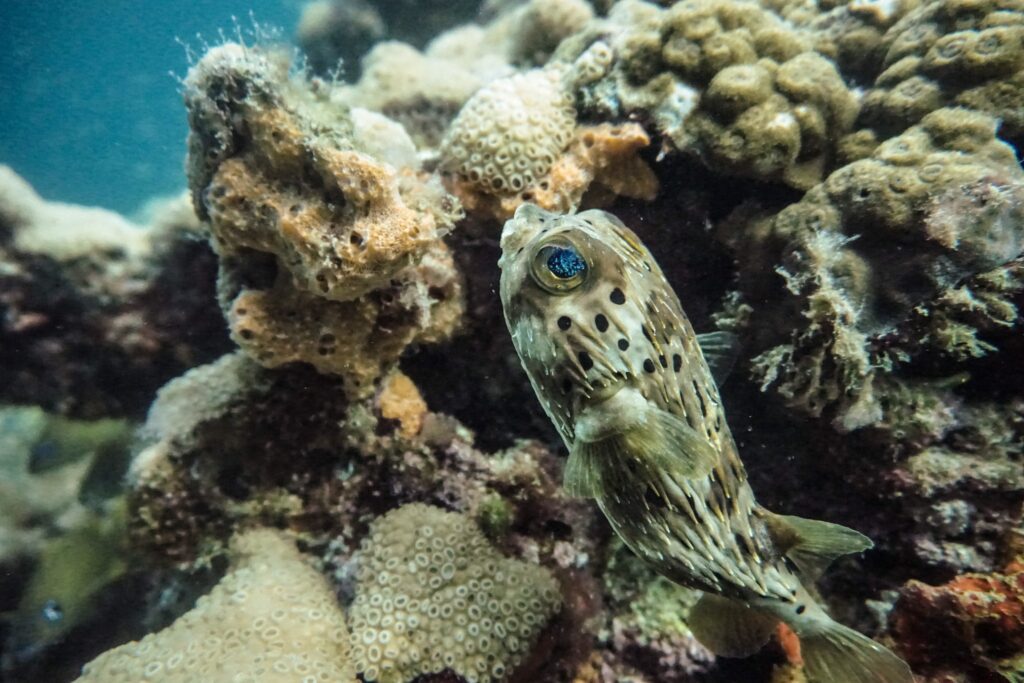
What can you do to help?
Admittedly, it’s hard to find the right solutions to these problems. What’s one person to do, anyway? Well, you’d be surprised.
Here at OceanWide Explorers, our big thing is to live sustainably. Here’s a few tips to get the job done:
- Eat sustainably sourced fish. Seafood Watch is a great resource to discover which fish for your region are caught in sustainable manner.
- Most plastic ends up in a landfill, and eventually the ocean! Use alternatives to single-use plastic to reduce your impact!
- Be an advocate for our oceans. Support conservation efforts around the globe. A few of our favorites are REEF, The Ocean Cleanup, the Ocean Conservancy, and Free Our Seas.
- The Coral Restoration Foundation in Key Largo is doing fantastic work in combating threats facing coral reefs!
The Florida Reef Tract has been our home and playground for years now. It’s our favorite escape to nature.
We believe if you visit and enjoy the coral reef in Florida you may just turn that appreciation into action! The coral reefs need all the help they can get!
Enjoy this Post? Pin it!

Read More Ocean Adventures
We hope you enjoyed our post on the Florida Reef Tract. Hopefully you’ll find it useful on your next adventure! Here are a few more ocean-loving articles we think you should read next:
- Why Do You See Tires While Diving in Fort Lauderdale?
- 11 Reasons to Dive in Fort Lauderdale
- 8 Reasons You Should Start Hunting Lionfish
- Leave No Trace at the Beach
Leave a comment below with any other questions you may have about the Florida Reef Tract!


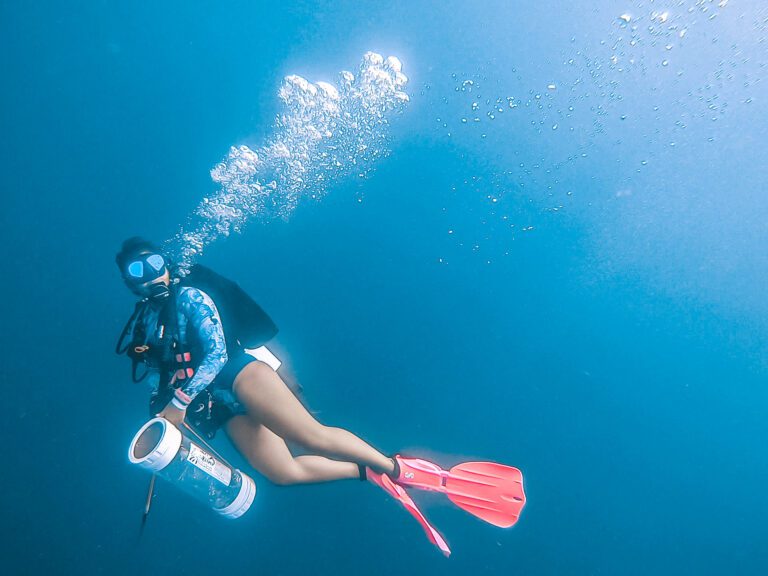
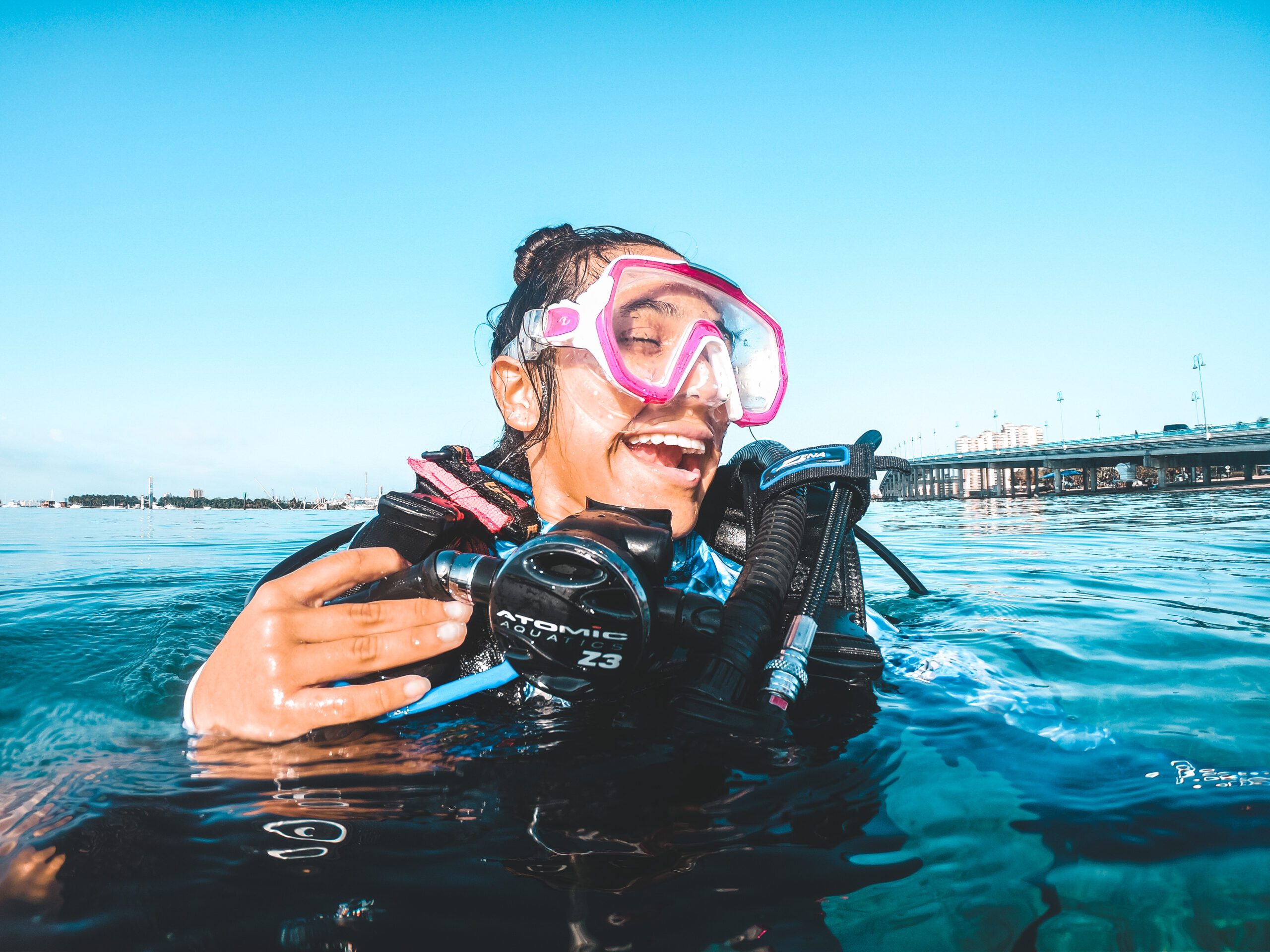
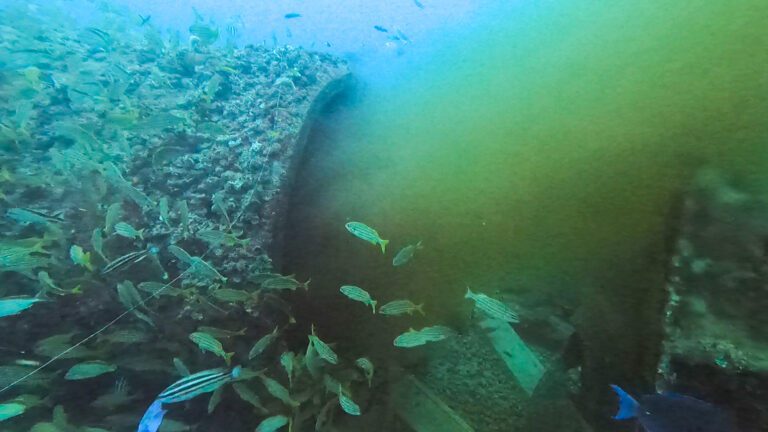
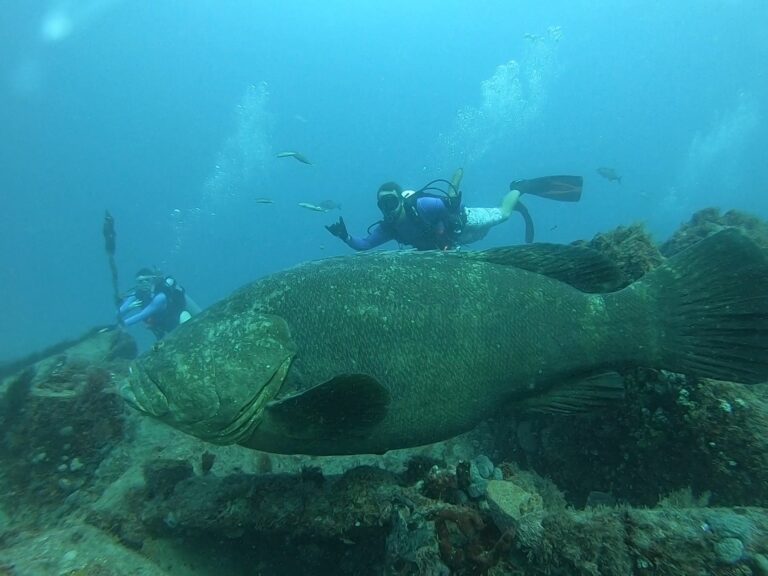
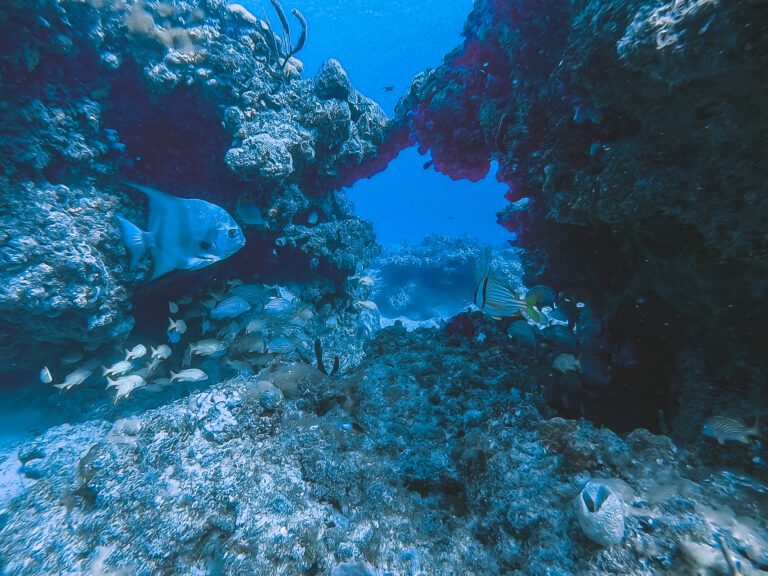
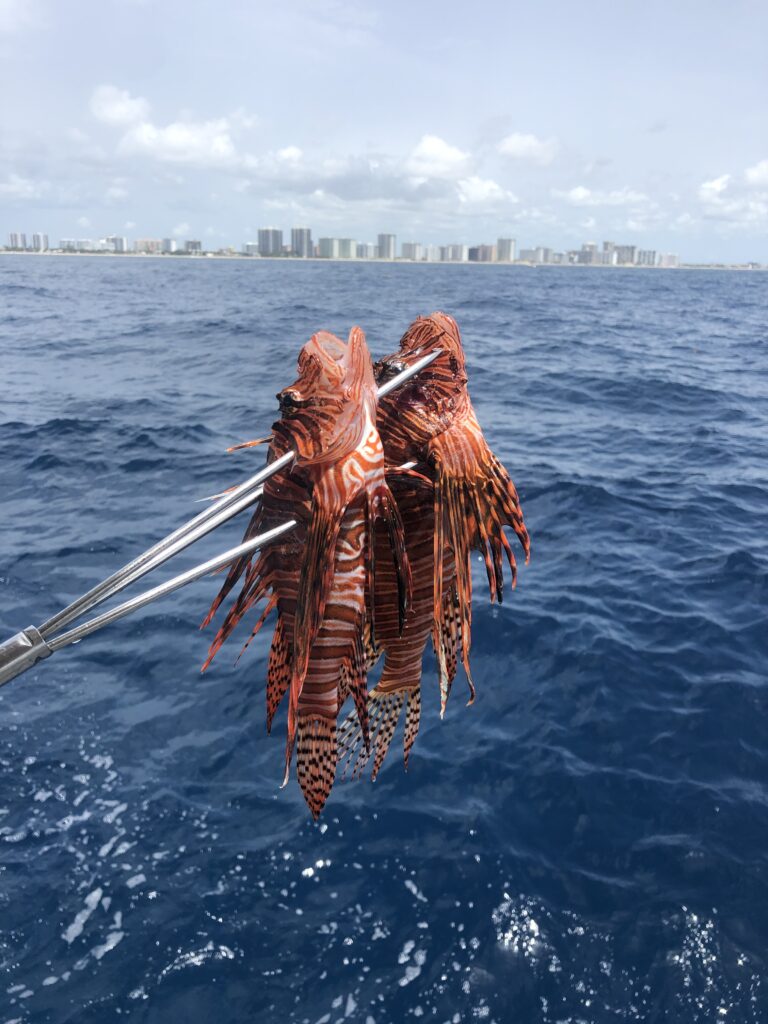
3 Comments